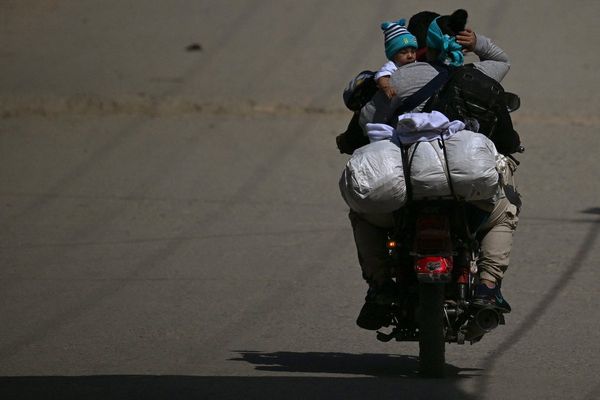Our cultural hypocrisy toward mental illness and addiction, not to mention fame and fortune, is never more evident than when some poor famous soul dies by suicide. "Why?" we ask. "Why would a person who seemed to have it all end their own life?" And then someone writes a book or makes a movie about it.
How many stories of the rich, famous and deeply unhappy must we watch or read before we accept that fame plus fortune doesn't equal happiness, and often seems to preclude it?
More important, how many people, famous or not, who have struggled with depression, anxiety or addiction will have their deaths treated like some true-crime mystery before we come to accept the proven fact that mental health is actual health and that mental illness is frequently fatal?
Do we ask "how could it happen" if a person diagnosed with cancer dies of … cancer?
What on earth could have caused this alcoholic with a history of depression to kill themselves? It must have been the terrible girlfriend, husband or boss.
Two new high-profile projects — "Down and Out in Paradise: The Life of Anthony Bourdain," a book by Charles Leerhsen, and "Blonde," a film by Andrew Dominik — are currently providing a master class in elephant-in-living-room avoidance.
Despite their obvious connections, it pains me a bit to compare them. "Down and Out" is a suicide whodunit framed as a biography; some of the many friends and family who declined to speak with Leerhsen have claimed that much in the book is inaccurate. Still, it reads as a sincere, if single-minded, attempt to look at the actual events of Bourdain's life.
"Blonde's" depiction of Marilyn Monroe, on the other hand, is essentially a hate crime.
Monroe's life and tragic death — she left no note, but the number of pills she took on Aug. 4, 1962, caused the coroner to rule it probable suicide — has been pored over for decades by writers as varied as Norman Mailer and Gloria Steinem. "Blonde" is Dominik's adaption of the 1999 Joyce Carol Oates novel of the same name, a novel that heavily fictionalized Monroe's life. So it is, by definition, as far from a biopic as a film can get while still employing an actor (Ana de Armas) to look as much like a very famous person as possible.
Dominik has said point-blank that he was more interested in imagery than actual events, and his taste in imagery results in a pile-on of fictional horror that includes several rapes (one committed by President Kennedy), a forced abortion and a masochistic ménage à trois with two Old Hollywood scions, Charles Chaplin Jr. and Edward G. Robinson Jr.
After the two-hour-plus death march of trauma and unhappiness that is "Blonde," the audience is left with no uncertainty as to why the woman De Armas plays would kill herself; the only question is why she doesn't do it sooner.
"Down and Out," which chronicles the many stages of Bourdain's life — troubled teen turned chef, author of "Kitchen Confidential," reinventor of food and travel television with shows including "No Reservations" and "Parts Unknown" — has a similar "so many steps to death" subtext. It is a journalistic effort, albeit one with many authorial suppositions. There being no way to fact-check how Bourdain was feeling in his final days, or really any other days, Leerhsen is content with evidence-based conjecture.
There have been several other attempts to solve the "mystery" of Bourdain's suicide; in "Roadrunner: A Film About Anthony Bourdain," Morgan Neville courted controversy by using an AI simulation of Bourdain's voice to "read" an email Bourdain had sent. But as many outlets have recently — and hyperbolically — noted, Leerhsen was able to obtain texts Bourdain sent in the days before his death as well as interviews with some of the people who saw him last. These included fellow chefs and friends Eric Ripert and Jean-Yves Schillinger who, though worried about his state of mind, seemed relieved that Bourdain seemed his old self at what would be their last dinner together.
Many of the texts and interviews involve an argument between Bourdain and Asia Argento, with whom he had a stormy and obsessive relationship that seemed to implode during Bourdain's final week. Leerhsen believes that the breakup triggered in Bourdain a life reevaluation that led to suicide.
"By briefly reliving his past with Schillinger and Ripert and his crew," writes Leerhsen, "he may have gotten a glimpse of how far he had come. By experiencing what he had been, he may have seen more clearly what he'd turned into — a character out of a sordid, slightly deranged James Ellroy novel, a doomed and desperate lover who hired a private detective to soil an obscure kid actor for the sake of a woman who respected him less for each effort he made on her behalf."
Or, you know, maybe not.
That Bourdain was an alcoholic who had been drinking heavily in the weeks before his death does not factor into Leerhsen's overwrought analysis.
Just as Monroe's well documented bouts of depression and anxiety or her addiction to drugs and alcohol could not possibly be the reason she overdosed; in Dominik's lurid fantasia, she was the victim of exploitation, celebrity and a fatal daddy fixation.
There is no doubt that Monroe was, and continues to be, a victim of exploitation and celebrity — "Blonde" proves that point by existing. Likewise, Bourdain and Argento's relationship was not even in the neighborhood of healthy. But Bourdain's alcoholism and bouts of depression predated her birth, never mind their relationship.
Trauma, physical and emotional, can lead to bouts of depression, anxiety and self-medication, but for many people these are life-long conditions that must be managed — like, say, diabetes. Though Bourdain famously kicked his addictions to heroin and crack, he continued to drink heavily, often as part of his show.
Leerhsen repeatedly refers to Bourdain as "a functional alcoholic," as if Bourdain's output, as a chef and then a television personality, negated the devastating effects alcoholism can have on a person's mind and body. Work is only one function of a person's life, and lethargy or isolation are not the only symptoms of despair.
I am not a psychologist or psychotherapist; I do not pretend to know why this or that person would decide to take his or her own life.
But I am a recovering alcoholic, and I know many other alcoholics, and suicidal thoughts are very much symptomatic of that disease, just as they are of depression, anxiety and other mental illnesses. When I hit my bottom and came to see, as Leerhsen suggests Bourdain did, that I had become someone I did not like, I realized I was either going to have to get sober or end my own life. Mercifully, I was, in that moment, reasonable enough to realize I should at least try getting sober first.
When I read of Bourdain's death, I wasn't so much shocked as sad that he had been unable to give himself a chance to get sober.
Monroe and far too many others lived and died in times when issues with mental health were viewed in terms of morality and grit, when addiction was considered a character flaw and depression a failure of gumption. That is no longer an excuse.
Not every person who dies by suicide has a history of mental illness, but when they do, we need to more clearly identify it as the cause of death. Every time we don't, we chip away at the hard-won knowledge that addiction, depression, anxiety and other mental illness are just that— illness.
And when the cause of death is staring you in the face but you continue to sift through the person's life looking for clues, it's time to admit you are not searching for anything; you're just rubbernecking.







